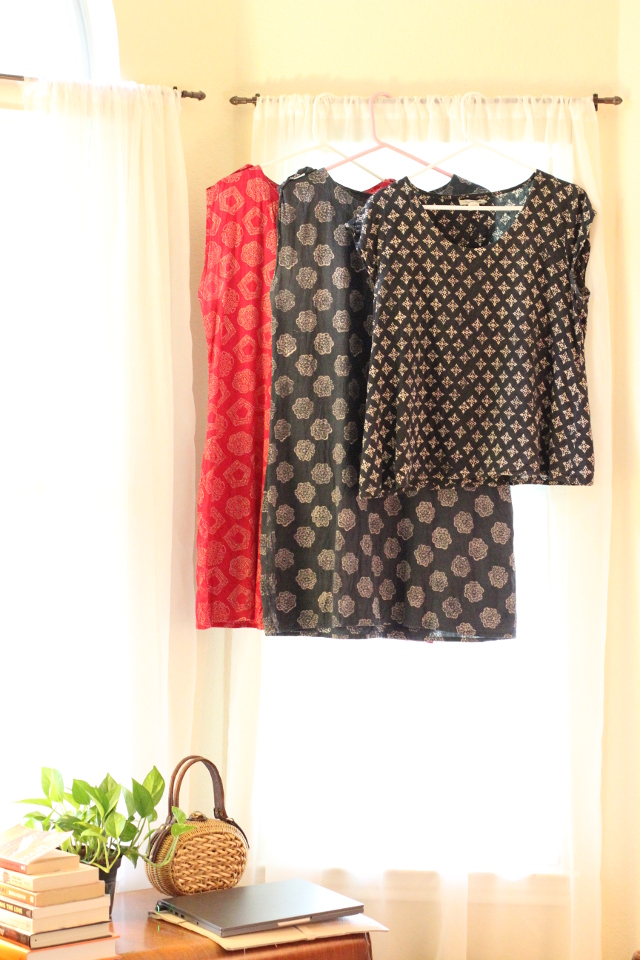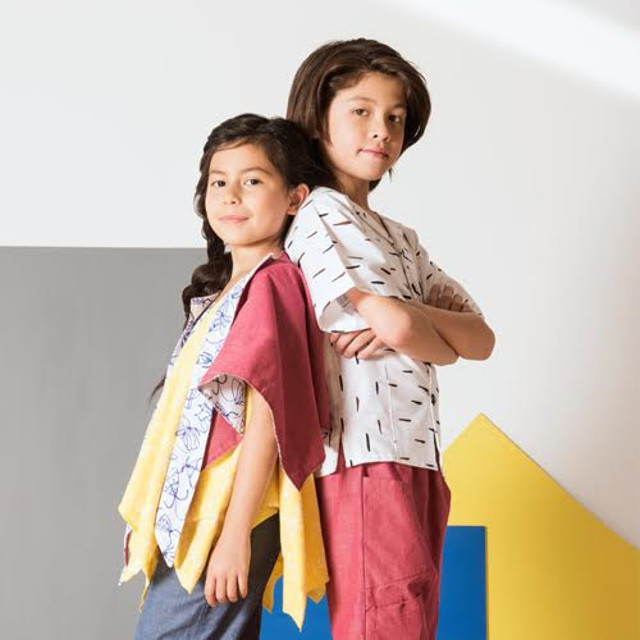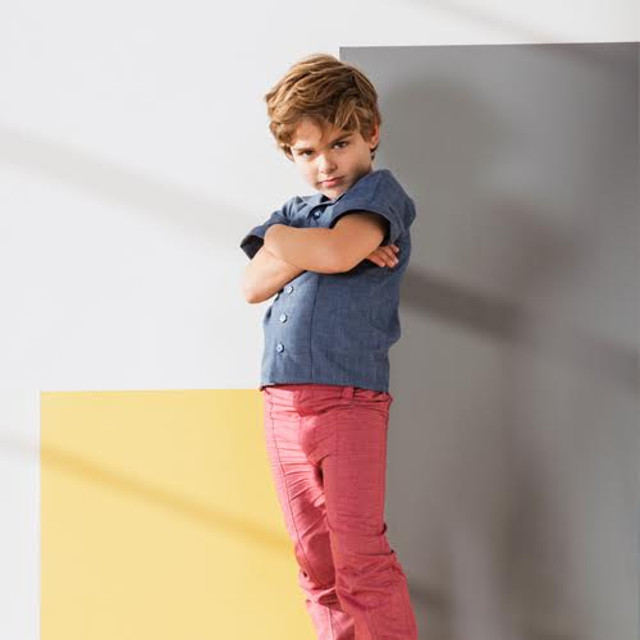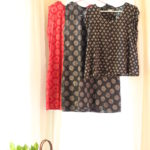
This is Fashion Revolution Week and Monday marked the fourth anniversary of the building collapse at Rana Plaza. Since 2013, the issue of ethical clothing has moved closer to the forefront of the fashion world, and many brands have taken steps to become more transparent in their supply chains. Consumers have become more educated, too, and things have started to change for the better. But there’s more work to be done.
This year, I’m celebrating my favorite ethical pieces with a little love letter, of sorts. Some of my fellow Ethical Writers are also participating, and I’ll link to their blogs below. Fashion Revolution asks participants to love our clothes more and longer, in an effort to reduce consumption and waste. My most favorite ethical pieces were purchased in 2013, after the events at Rana Plaza opened my eyes to the bigger issues of the fashion world. Some of my first purchases were from Mata Traders, which employs fairly-paid female workers in India and Nepal, and I still wear them frequently through the hottest months in Texas. I started with a single black shift patterned with a beautiful handblocked print, and eventually bought a second dress in red. Both dresses are cotton and sleeveless, and the epaulets on the shoulders are my very favorite detail.
If you’ve experienced a Texas summer, then you know it’s almost painful to wear clothing in the heat. I always look for the lightest fabrics and easiest silhouettes, because extra details like heavy waistbands and body-hugging styles will only weigh you down and make you sweat. These dresses, along with a blouse in a similar style, are my closet essentials in July and August, and I wear them weekly. I can wash them on the gentle cycle, and if I hang them outside to dry, they are ready to go in an hour or so. It’s wonderful to throw a dress on in the morning and feel ready for the day, and their casual style is perfect for my suburban life of running errands and shuttling my boys to their activities.
All three pieces have seen a lot of wear since I purchased them in 2013, and I’ve actually altered each item slightly by removing a few gathered, elasticized seams on the bodices. That way, I’m able to wear a belt with the dresses and blouse and can dress them up a little. And, looking back through my posts, I’ve written about the dresses on five separate occasions, so it’s easy to see how much I love them. While I don’t consider myself very sentimental, I do think I’ll keep these three pieces forever. The fabrics and small details are beautiful, and bringing them out of my closet each year heralds the arrival of another wonderful summer.
Do you have a favorite clothing item you’ll never part with? I’d love to hear your love story!
And here are some great posts from my fellow Ethical Writers:
FashRev Week: My Fashion Revolution Love Story, from Leah of StyleWise.
Fashion Revolution 2017 Love Story: Paris Flea Market Cardigan, from Annie of Terumah.
14 Sustainable and Ethical Fashion Myths That Need to Die, from Alden of EcoCult.
I’m Starting a Revolution, from Kasi of The Peahen.
Fashion Revolution Week: Where Do I Begin? from Kaméa of Konscious Whispers.
My earlier Fashion Revolution posts can be found here.
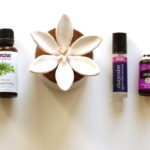
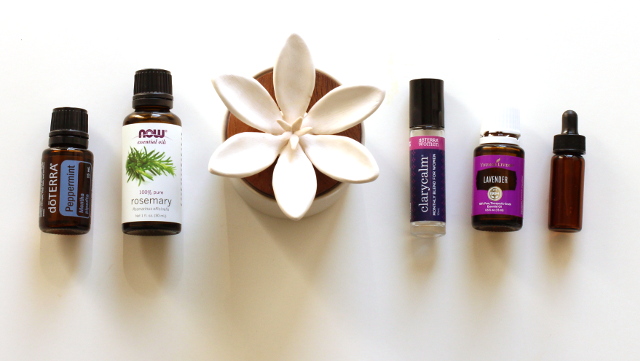
(A few of my essential oils and natural diffuser.)
As my interest in natural beauty has grown over the last several years, I’ve started using essential oils in a variety of ways. I’ve been a perfume lover for years, but after an allergic reaction a few summers ago, I stopped using artificial scents. Essential oils initially appealed to me because I can add one single oil or a blend to unscented lotion or a carrier oil to create my own fragrance. Most of my essential oil use is for aromatherapy purposes, and I maintain a healthy dose of skepticism regarding their effectiveness, specifically when it comes to medical claims. I’ve done a bit of research and found some interesting facts, as well as a few safe, practical ways that essential oils work for me.
I have friends who sell different brands of essential oils and I’ve heard many claims about their benefits. As an ethical consumer, I prefer to dig into the details of a product before I buy it, and it’s especially important to do your own research before dabbling in essential oils. Young Living and doTERRA are the two most popular multi-level marketing brands on the market, and doTERRA was founded by former Young Living employees after an internal company disagreement. In 2014, the FDA issued a warning letter to both Young Living and doTERRA, as well as a third essential oils brand, for marketing their products as potential cures for the Ebola virus and other serious illnesses.
It’s my opinion that strategic marketing is behind the resurgence and success of these essential oil brands, and I also find it especially telling that their use has increased as health insurance and quality healthcare become less accessible in the United States. There is very little data to suggest that essential oils offer much more than a placebo effect for many health concerns, though in my research, I found a few studies that were interesting. If you are in the market for essential oils but prefer to avoid MLM brands, Now Foods (sold at many grocery stores and at Amazon) and Eden’s Garden are two great options. Everyone who uses essential oils will have a different opinion on the quality and scents of different brands, but as a skeptical consumer of oils, I’ve found very little difference between all of the brands I’ve mentioned. It really seems to come down to a scent preference.
Also, common sense usage is important with essential oils. I’ve encountered what I perceive to be a metaphysical reverence held by some lovers of essential oils, and I also chalk that up to brilliant marketing campaigns. Essential oils are a product, much like any beauty product or over-the-counter medicine you might buy, and there is no spiritual transformation that occurs when you use them. Should you experience a skin irritation or rash, it’s important to stop using the oil immediately; it’s not a sign that your body is working through unexplored feelings with the oil or that toxins are being removed. It just means your body chemistry does not work well with the oil you applied to your skin. My skin has reacted poorly to beauty products containing citrus and rose oils, so I stopped using them. It’s also true that some essential oils can be taken orally or used when cooking, but it’s best to do your own research before trying them or giving them to children or pets.
In my day-to-day life, I’ve found a few beneficial uses for essential oils. Many oils smell lovely, and I enjoy diffusing them throughout my house. It’s an easy and safe method to enjoy the fragrance of oils without using them on your body. I’ve also found that mixing lemon or orange oil with vinegar as a cleaning spray is a great way to add a bit of refreshing scent while I wipe down my bathroom counters.
Lavender, one of the most commonly used essential oils, has been studied and found to have some short-term benefits, including aiding in relaxation. I will add a drop to my younger son’s evening bath when he is feeling sick or cranky, and it helps him to relax before bed. If I am particularly stressed, I will apply a few drops of lavender mixed with a carrier oil to my temples or under my nose before I fall asleep, too.
Rosemary oil is known to help with hair growth and a recent study found that it produced similar results when compared to the drug minoxidil as treatment for androgenetic alopecia. I add a few drops to my shampoo and conditioner bottles and also recently tried this easy-to-make hair serum using castor oil as a base. I apply a drop to my eyebrows before bed and I have noticed a small amount of growth along the outer edges of my brow line. I have thyroid issues, which can cause brow thinning, and the new hair growth could also stem from successfully controlling my thyroid hormone levels via medication.
I enjoy using a few blended oils by various companies as natural perfumes, and my very favorite is DoTERRA’s ClaryCalm. I use it strictly as a perfume and love its light and refreshing smell. My husband also uses AromaTouch, along with daily stretching, to ease his sore muscles after running. I also use a few natural beauty products that contain small amounts of essential oils as secondary ingredients, though I have to be selective about which products I try.
Overall, I’ve enjoyed testing various oils and scents by different brands, and with a bit of research and some general understanding of how they work, I feel comfortable using them on a daily basis. As with any natural product, your experience might be different and I definitely recommend doing your own research, too.
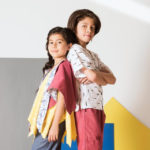
My boys are at that stage in elementary school where they grow like literal weeds. This past weekend, we were on the hunt for one pair of shoes for each boy when I realized that my six-year-old has suddenly outgrown his size 6 pants, in the legs at least. As he tried on a gigantic pair of sneakers, his bare ankles stuck out inches below his pants that seemed to fit fine earlier in the week. It’s almost shorts weather in Texas, so I can wait until the fall to buy new pants, and it’s inevitable that he will have gained more inches by then.
Jake + Maya Kids, Slow Fashion for Fast Growing Kids, is a new line of children’s clothing hoping to break the cycle of consumerism and eventual waste that goes along with shopping for kids’ clothes. Tze Ching Yeung, Jake + Maya Kids’ creative director and a mother of twins, found inspiration in her own children as she designed the line to grow along with them. Frustrated by the amount of clothing left behind as kids outgrow it, Yeung and her staff worked to create pieces with adjustable waists, rolled cuffs, and other adaptable features that allow the items to be worn much longer than most children’s clothing. Fabric can also be added to pieces to enlarge sizes, and Yeung explains, “by extending a garment’s lifespan by nine months, its carbon footprint gets reduced by 20-30%.”
Jake + Maya Kids launches its Kickstarter campaign today, and the line also features beautifully printed fabrics in gender equal and unisex styles, so children can mix and match the pieces as they like. The company is committed to ethical production and uses a zero-waste design process, as well as sustainable and organic materials. The company’s goal is to reduce its waste to almost nothing, and they are well on their way.
I’m excited to support sustainable children’s clothing that grows with the kids who wear it, and Jake + Maya Kids’ campaign offers many affordable support options, ranging from a printed tee to an entire outfit. If you’re constantly on the hunt for quality clothing for your children, please check out Jake + Maya Kids’ Kickstarter.
(Photos courtesy Jake + Maya Kids)

